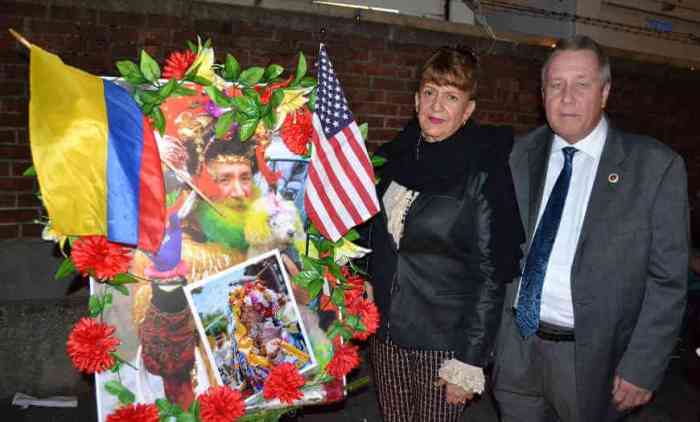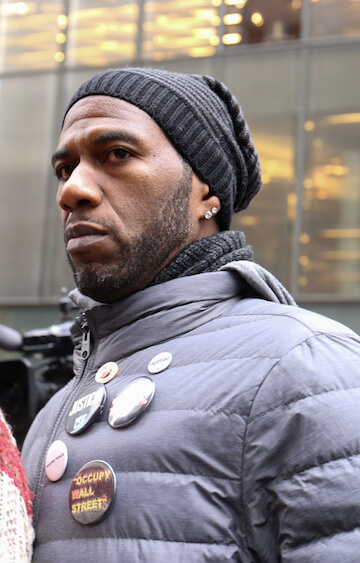Repeal posters plaster the outside of PantiBar in Dublin. | KATHLEEN WARNOCK
Irish citizens will go to the polls on May 25 for a referendum on whether to “Repeal the 8th” Amendment to their Constitution, which bans abortion.
Three years ago, the country voted overwhelmingly to add an amendment that affirmed marriage equality. The entire country seemed to take part in that grassroots campaign that saw every door in the country knocked on by canvassers, thousands of citizens returning from abroad to cast their votes, and TV and radio campaigns flooding the airwaves.
This spring, posters have been plastered on every flat surface and hung high on lampposts, and there are murals on the sides of buildings. Trucks with advertisements cruise the streets of Dublin, and people wear shirts and buttons proclaiming “YES” or “NO.”
In an overwhelmingly Catholic country that only legalized birth control in 1980, decriminalized homosexuality in 1993, and permitted divorce in 1996, this referendum aims to repeal that portion of the Irish Constitution’s 8th Amendment that prohibits abortion.
May 25 referendum could upend ban dating to mid-19th century English rule
“Some people are what I’d call ‘culturally Catholic,’” said Rory O’Neill, aka Panti Bliss, one of the most visible spokespeople for marriage equality. “They don’t go to Mass or listen to what the bishop tells them to do, but from Day 1, they’ve always been told what’s right and what’s wrong and it’s part of their makeup.”
“Yes” vote signs dot Dublin's Temple Bar. | KATHLEEN WARNOCK
“Repeal the 8th” is using a similar playbook to the marriage equality campaign. And many activists have been involved in both movements and make a connection between the two.
“Absolutely they are connected,” O’Neill said. “Women’s rights and gay rights are civil rights. The abortion rights movement learned from what we did: using the power of personal stories and reaching out to individuals.”
The front windows of PantiBar in Dublin are painted with a Repeal mural, and the bar was the focus of a demonstration by an Irish queer “Vote No” group. The group, calling itself “LGBT Pro-Life Ireland” on its Facebook page, has about 1,600 followers.
Panti documented the demonstration and even took a photo with the head of the group. A journalist and gay contrarian, Paddy Manning — who was also against marriage equality! — has become a spokesperson for the LGBTQ “Vote No” movement, appearing on talk shows and devoting his social media to “No” posts.
“No” signs are also common sights on Dublin's streets. | KATHLEEN WARNOCK
At Dublin’s Temple Bar, a “Yes” mural on the wall of the Project Arts Centre was vandalized. A group of visitors from the US watched as a young woman asked someone to take a photo in front of it. The person she asked angrily declined. She approached the Americans, one of them wearing a just-purchased “TA” (Yes) badge, who documented the girl standing in front of the paint-splashed mural.
“The 8th Amendment” is how most people refer to Article 43.3.3 of the Bunreacht na hÉireann, Ireland’s Constitution, which states that a fetus has an equal right to life as the woman carrying it, and outlaws abortion except when the woman’s life is in “real and substantial danger.”
The amendment was made law in 1983, though abortion had been illegal since 1861, with a penalty of life in prison for a person convicted of violating the law. When the country became a republic in 1920, the new nation kept the existing English law against abortion.
England legalized abortion in 1967, and Irish women who wanted to terminate pregnancies had the option of taking the ferry — or later, a short plane trip — to England. Those women, however, were officially prohibited from leaving the country for an abortion, and other laws were passed that forbade giving information about abortions to women seeking counseling.
Over time, voters chipped away at the reach of the 8th, authorizing other amendments that permitted the right to distribute information about abortions in other countries and guaranteeing the right of women to travel to other countries for abortions. But attempts to repeal or reform the 8th itself have to date been defeated at the polls.
In recent years, the United Nations Human Rights Committee has heard several cases on Ireland’s abortion laws, and found that they violate the United Nations International Covenant on Civil and Political Rights and called for the law’s reform.
Both the “Yes” and “No” campaigns are using every form of media, and the issue of funding from outside of Ireland caused Facebook to ban all ads from foreign groups as of May 8. At the same time, CNN reported that Google would not accept any ads at all regarding the referendum. A media watchdog group, TRI, reported that the ban is not entirely successful, and there are still non-Irish groups managing campaigns and ads turning up in Google searches.
Polling the week before the referendum showed that Repeal had a narrow lead over “No,” and both campaigns were planning “get out the vote” drives. Voting in Ireland is done on the day of the referendum or election, with some voters qualifying for voting by mail.
At Dublin’s Trinity College, students posted “Yes” signs, some of which were marked up with comments. | KATHLEEN WARNOCK
O’Neill said he thinks the polls may not be accurate, as people may tell a pollster one thing in person then vote another way in the voting booth. In his opinion, a large turnout will favor the “Yes” side, and this could be an election decided by the “undecideds.” Some pollsters think that the 18-24-year-old male voter could be the deciding demographic.
On the day of the vote, exit polls will be taken throughout the day. If it looks as though the vote is not close, an announcement will be made by mid-morning Saturday. If it’s a close contest, the announcement may not be made until much later in the day.
The announcement will be different from the one on the 2015 Marriage Referendum. That day, the vote was in early and overwhelmingly for marriage equality and people danced in the streets and paraded around town. On the abortion question, if “Yes” wins, it won’t be seen as a cause for partying, but rather the end of a long-time wait for a right that’s another step in the road to equality but the absence of which has disrupted many lives and caused too many deaths.





































